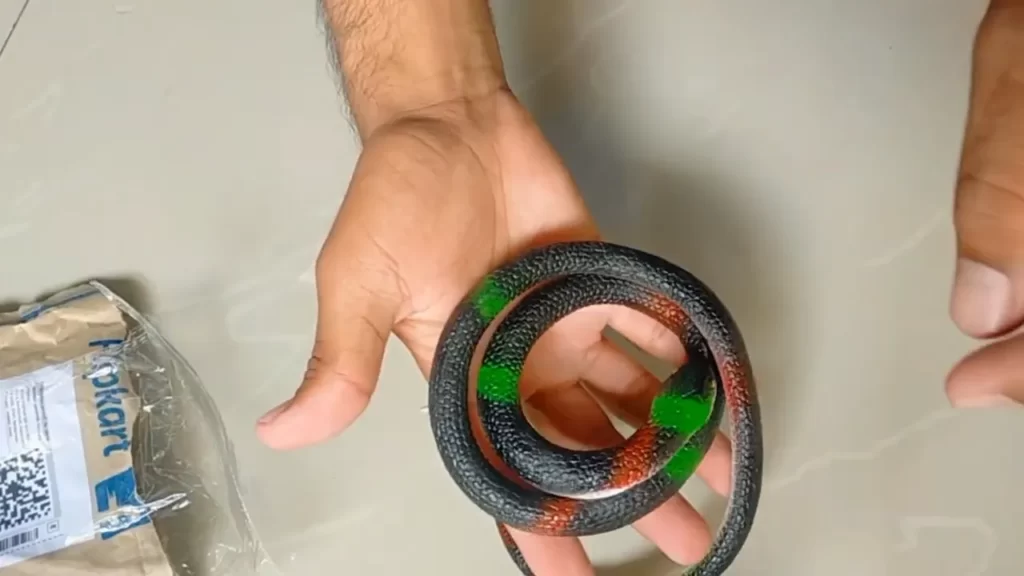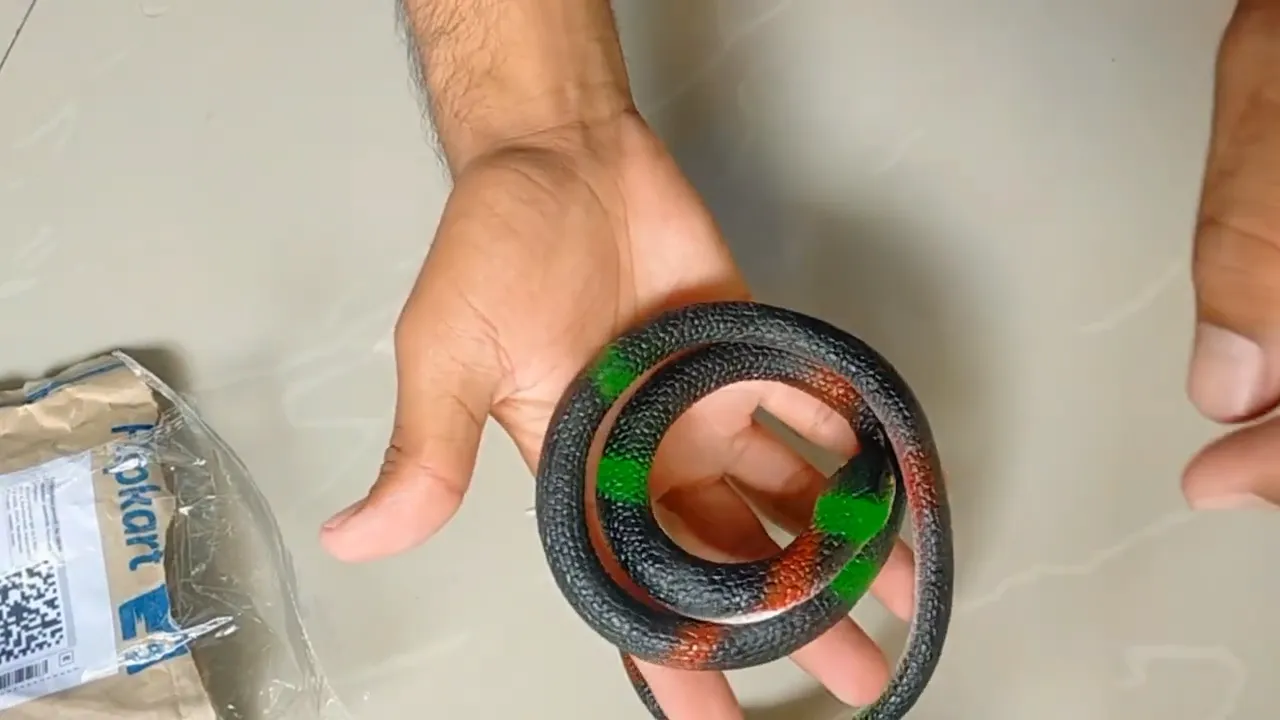Birds, while enchanting, can sometimes pose problems in urban settings. From nesting in unwanted places to causing noise disturbances, homeowners often search for ways to deter these feathery visitors. One such method debated for its effectiveness is the use of fake snakes. Birds and snakes have shared environments for millions of years, with the latter often being a predator.
Fake snakes are believed by many to act as a deterrent for birds, capitalizing on their instinctual fear of these reptiles. The idea is straightforward: if a bird believes there’s a snake nearby, it’s less likely to linger in the vicinity. But do these plastic or rubber replicas truly keep our avian neighbors at bay?
The relationship between birds and snakes is an intricate dance of survival and fear, deeply embedded in their natural behaviors. This dynamic is central to discussions about bird control methods and their effectiveness.
Fake Snakes as Bird Deterrents
Birds, with their keen eyesight and heightened sense of danger, have always had to be on the lookout for threats. One such menace is the snake. But can a fake snake genuinely deter these airborne creatures?
Why Birds Fear Snakes?
Evolutionary Reasons
Over millions of years, birds and snakes have interacted in their shared habitats. This long-standing relationship has shaped the evolutionary behavior of birds. Seeing a snake often triggers a flight response, a natural reaction embedded over eons to ensure survival.
Birds’ Natural Predators
Snakes are adept at climbing trees, sneaking into nests, and preying on young birds or eggs. For many bird species, a snake represents a direct threat not just to them, but to their future offspring.
Effectiveness of Fake Snakes
Visual Deterrence
The sight of a snake, even a plastic or rubber one, can evoke a sense of danger in birds. Placed correctly, a fake snake can prevent birds from approaching an area, leveraging their innate fear.

Limitations and Habituation
However, birds are intelligent creatures. Over time, if the snake doesn’t move or show signs of life, birds might realize it’s not a threat. This recognition reduces the effectiveness of the deterrent.
Other Bird Scare Tactics
It’s not just fake snakes that homeowners and farmers employ to keep birds away. There are several methods, each with its unique approach.
Reflective Objects
CDs and Aluminum Foils
Bright, shiny items like CDs or aluminum foils can be used. When they catch the sun’s rays, they produce a glare. This glare can disorient birds or make them uncomfortable, prompting them to stay away.
Benefits and Setbacks
While inexpensive and easy to set up, their effectiveness can wane on cloudy days or if birds get accustomed to them.
Noise Makers
Ultrasonic Devices
These devices emit sound waves at frequencies generally inaudible to humans but disturbing to birds. The concept is to make an environment acoustically unappealing to them.
Propane Cannons
Farmers often use propane cannons. These devices produce loud bangs, mimicking gunshot sounds, which scare birds away. However, they can be disturbing to neighbors or other animals.
Decoys and Other Visual Deterrents
Owl Figures
Owls are natural predators of many birds. Plastic or wooden owl figures, especially those with moving parts like bobbing heads, can deter birds.
Moving Objects: Windsocks and Spinners
Objects that move with the wind, like windsocks or spinners, create an unpredictable environment. Birds prefer stability, so they might avoid areas with these objects.
Factors Affecting Deterrence Success
Species of Birds
Different Fears for Different Birds
Not all birds react the same way. While a sparrow might be scared off by a particular deterrent, a crow or pigeon might not bat an eye. Knowing the species you’re dealing with can guide the deterrence method.
Placement and Visibility
Strategic Placement Tips
- Ensure the deterrent is visible.
- Place it in areas frequented by birds.
- Move it regularly to create unpredictability.
Changing Tactics Regularly
Birds adapt. If one method works for a time and then loses its effectiveness, it’s a sign that the birds have habituated to it. Rotating between different tactics can keep them off balance and more likely to avoid the area.
Avoiding Bird Habituation
Consistency is key. If you’re using noise deterrents, for instance, sporadic use might lead to birds recognizing the pattern and ignoring the noise. Regular, unpredictable changes in deterrence can keep them wary and less likely to settle.
Safe and Humane Deterrents
In our efforts to deter birds from specific areas, it’s crucial to prioritize their safety. Using humane methods not only protects the birds, but it also safeguards the environment and maintains a healthy ecological balance.
Importance of Non-Harmful Methods
Birds play a significant role in the ecosystem. They pollinate plants, control pests, and aid in seed dispersal. Harmful deterrents can inadvertently damage these critical functions and disrupt the environmental balance. Moreover, ethical considerations demand that we treat all living beings with kindness and respect.
Avoiding Traps and Poisons
Using traps or poisons might seem like quick solutions, but they come with grave consequences. They cause unnecessary suffering to birds and can inadvertently harm other wildlife or pets. Such methods can also bring about public disapproval, leading to potential legal repercussions.
Advocating for Coexistence
It’s essential to understand that birds have as much right to exist in the environment as we do. Our focus should be on coexistence, not on driving them away entirely. Coexisting ensures a thriving ecosystem where every organism, big or small, plays its part.
Alternative Methods
Finding effective alternatives that don’t harm birds can seem challenging. However, many methods effectively deter birds without causing them harm.
Bird-Proofing Structures
Spikes and Nets
While they might sound harsh, spikes and nets can be humane solutions when used correctly. Spikes prevent birds from landing on ledges, while nets can keep them away from specific areas. Both methods act as barriers and don’t harm the birds.
Safe Deterrents for Gardens
Gardens are common places birds visit, often in search of food. While their presence can be delightful, some birds might be unwanted visitors due to the damage they cause. Using safe deterrents ensures your garden remains bird-free without causing them harm.
Natural Predators
Natural predators can deter smaller birds. However, using actual predators can be tricky, and one wouldn’t want to introduce new creatures only to manage birds. Instead, the presence or illusion of these predators can be a deterrent.
Encouraging Native Bird-Eating Species
Inviting native species that prey on smaller birds can be a win-win. For instance, erecting owl boxes can attract owls, which are natural predators for many smaller bird species. Not only do you deter unwanted birds, but you also contribute to conserving native species.
Benefits of a Balanced Ecosystem
Birds form a vital part of the food chain. Their presence indicates a healthy environment. When we employ humane methods to deter them:
- Natural Balance: The ecosystem retains its balance, ensuring every organism thrives.
- Reduced Pests: Birds control pests, ensuring fewer bugs and insects.
- Pollination: Some birds aid in pollination, ensuring our plants reproduce.
Frequently Asked Questions
Do birds naturally fear snakes?
Yes, many birds have an innate fear of snakes since snakes are natural predators to certain bird species. This instinctual fear is what makes fake snakes a debated deterrent.
How long do fake snakes remain effective?
The effectiveness of a fake snake can diminish over time, especially if it remains static. Birds may soon realize the snake isn’t real, especially if it doesn’t move or pose any real threat.
Are there specific birds more deterred by fake snakes?
Certain ground-nesting or ground-feeding birds might be more deterred by fake snakes compared to those that predominantly remain in trees or high places, as they encounter snakes more often.
Can the placement of the fake snake affect its effectiveness?
Absolutely. Strategic placement, where the snake is highly visible and occasionally moved, can enhance its believability and thus its effectiveness as a deterrent.
Are there other effective bird deterrents?
Yes, beyond fake snakes, methods include reflective objects, noise makers, and even other bird decoys. It’s essential to choose a method suited to the specific bird species and setting.
Conclusion
Birds play a crucial role in our ecosystems, contributing to seed dispersal, pest control, and even beautifying our surroundings with their songs. However, when their presence becomes a challenge, finding humane, effective deterrents is vital. Fake snakes offer one such solution, leveraging the age-old relationship between these two creatures. Yet
their efficacy depends on various factors, and while they might work for some, they aren’t a universal solution. As with any wildlife management approach, understanding the behavior and needs of the animals in question is paramount, ensuring that we can coexist peacefully and sustainably.
